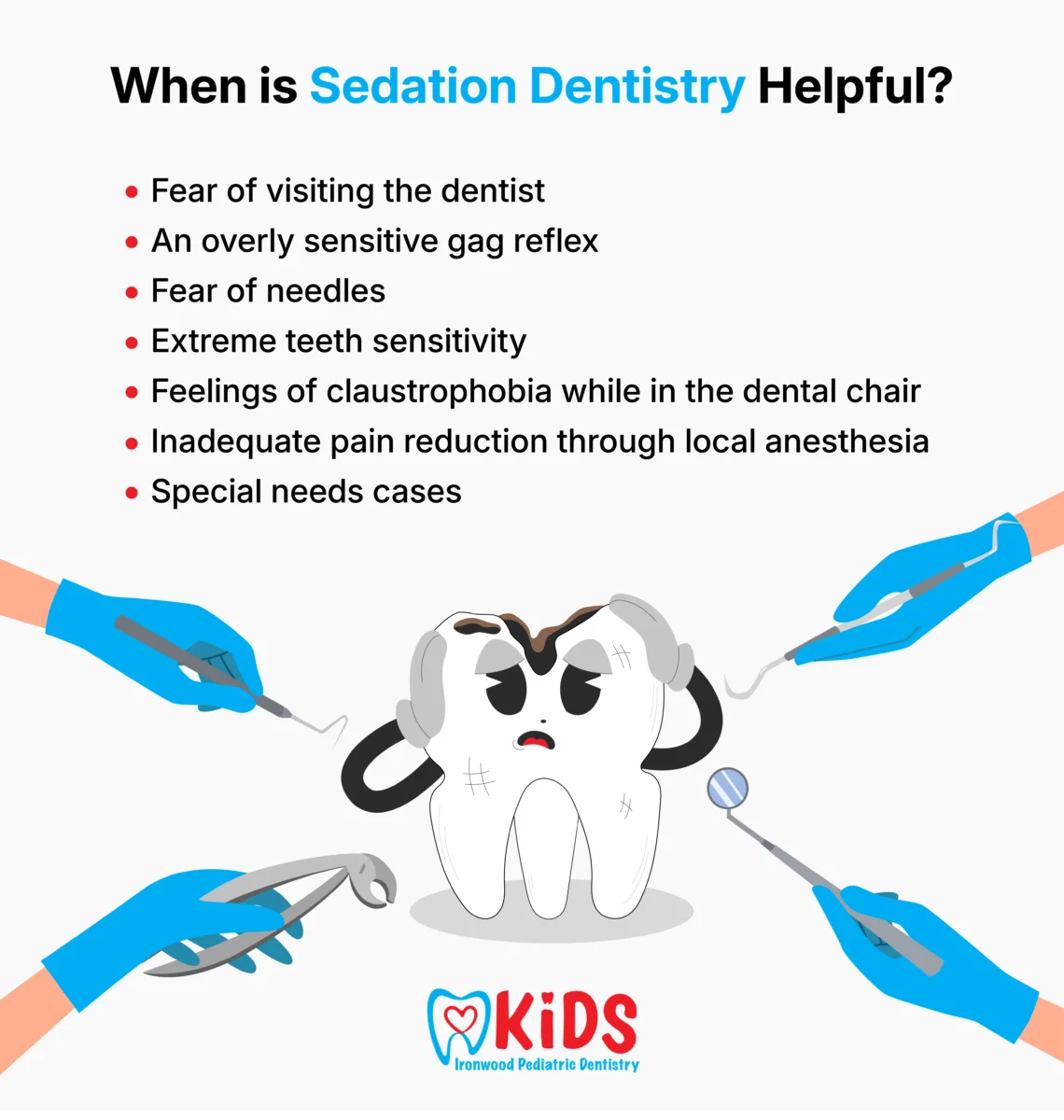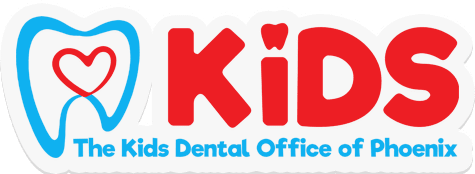The Arizona Health Care Cost Containment System (AHCCCS) can cover dental sedation for children under the age of 19 if it is deemed medically necessary.
At The Kids Dental Office of Phoenix, we accept AHCCCS for dental sedation.
If you have any questions, please call us at (602) 903-4894 so that we can help you and schedule an appointment.
When is Sedation Dentistry Medically Necessary?
A key consideration in determining if AHCCCS covers a dental procedure, including sedation dentistry, is whether the service is medically necessary.
This is a consideration that one of our dentists or orthodontists can help you determine, based on the following considerations:
- The patient’s medical or dental needs and desires.
- A recommendation by the patient’s health care provider.
- Whether the procedure is scientifically proven and generally accepted as a legitimate therapeutic procedure for the patient’s condition.
It is usually not difficult to justify the need for dental sedation and general anesthesia for young patients, especially if a child’s fears about a needed dental treatment might prevent the patient from being willing to undergo a dental procedure.
Does AHCCCS Cover Sedation Dentistry?
AHCCCS covers medically necessary pediatric dental services for children under 19, including sedation dentistry, as part of comprehensive dental care services. Specifically, AHCCCS covers the following kinds of sedation:
- Local anesthesia not in conjunction with operative or surgical procedures
- Deep sedation and general anesthesia
- Nitrous oxide sedation
- Intravenous conscious sedation
- Non-intravenous conscious sedation
AHCCCS pays for all costs of covered sedation options for children under age 19. This can save you considerable amounts of money; for example, AHCCCS pays $71.54 for every 15 minutes of general anesthesia, and $88.83 for every 15 minutes of IV sedation.
If you had to pay out-of-pocket for sedation dentistry, even mild sedation like nitrous oxide can cost about $100 to $150, oral sedation can cost up to $500, IV sedation up to $750, and general anesthesia runs from $400 up to $1,000 per hour.
What is Sedation Dentistry?
Sedation dentistry is a way to help a dental patient relax during a dental procedure.
It is a moderate level of sedation, sometimes called conscious sedation dentistry or “twilight sleep.” The patient remains awake, but the sedation allows for insensitivity to pain.
When is Sedation Dentistry Helpful?
Sedation dentistry is useful in many child dental treatment cases.
Common sedation situations include:
- Fear of visiting the dentist
- An overly sensitive gag reflex
- Fear of needles
- Extreme teeth sensitivity
- Feelings of claustrophobia while in the dental chair
- Inadequate pain reduction through local anesthesia
- Special needs cases, including physical, cognitive or behavioral considerations

What Kinds of Sedation Do Pediatric Dentists Use?
The kind of sedation your child’s dentist may use depends on the specific needs of your child. Considerations include the nature of the underlying anxiety or pain, your child’s health history, and the duration of the planned procedure.
In most cases, your child’s dentist will use one of the following:
- Nitrous oxide
- Oral conscious sedation
- Intravenous sedation
- General anesthesia
Nitrous Oxide
Nitrous oxide, also known colloquially as “laughing gas,” is a calming agent your child inhales through a nosepiece or a mask. It starts to have an effect within three to five minutes. It does not require an anesthesiologist to administer nitrous oxide; the dentist will take care of this during the procedure.
The effects of nitrous oxide wear off quickly with a pure oxygen flush, meaning that no recovery time is needed before you can bring your child home when the procedure is finished.
Oral Conscious Sedation
As the name suggests, this form of sedation is administered orally, usually in pill form but liquid options are also available.
Oral conscious sedation will result in grogginess and maybe even a state of light sleep. But the dentist can still awaken your child at any time. Once the procedure is over, it will take a little time to restore a fully conscious state.
Intravenous Sedation (IV)
This form of sedation is the deepest available short of general anesthesia. Your dentist will administer it into the bloodstream directly, and your child will go into a deep sleep.
IV sedation is often used for children who are particularly anxious about going to the dentist, or for dental procedures that may take a long time to complete.
Is general anesthesia ever used in dentistry?
This is the most powerful form of sedation, often used in connection with oral surgery. General anesthesia is unconscious sedation. Usually, an anesthesiologist will administer the sedation.
What Happens Before Sedation Dentistry?
Before using sedation, your dentist will talk with you to gather information about your child, including health history information, and to learn about any medications he or she may be taking.
If your child is taking any blood thinner medication, be sure to let the dentist know; it may be advisable to skip this kind of medication for a few days before the appointment begins.
Based on the information you provide, your child’s dentist will be able to recommend the appropriate kind of sedation dentistry.
Advantages of Sedation Dentistry
Sedation dentistry has two key advantages:
- For children who have severe anxiety about going to the dentist, it could make the difference between getting needed dental care and not going to the dentist.
- A relaxed dental patient is a cooperative dental patient. This can make the dental procedure not only easier on your child, but can make it go faster as well.
What Are The Potential Risks of Sedation Dentistry?
Sedation dentistry is ordinarily safe when performed by an experienced pediatric dentist. There is a chance, however, that your child could experience some minor side effects. These include:
- Lingering drowsiness
- Dry mouth (xerostomia)
- Nausea and vomiting
- Headaches
- Irritability
- Snoring
- Fever
- Bruising if IV Sedation is used
In rare cases, a child patient may have an allergic reaction to sedation.
Sometimes, your child can be slow to wake after sedation. If this happens, your dentist will monitor your child until he or she is ready to go home. This side effect is normal and should go away on its own in one or two days.
Do You Have Questions About Sedation Dentistry and AHCCCS?
The Kids Dental Office of Phoenix accepts AHCCCS as payment for pediatric dentistry, including covered sedation dentistry. To learn more about whether you qualify for AHCCCS dental cost coverage and about dental sedation for kids that we offer, call our dental office at (602) 903-4894.
If you prefer, you can also ask us a question or schedule a dental visit for your child by using our online contact form.
